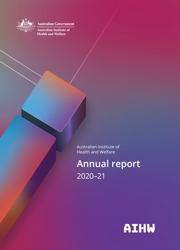Income support for young people transitioning from out-of-home
Our challenge
Building a new national OOHC outcomes data asset
Children who are, or have been, in OOHC – such as foster care or kinship/relative care – face greater vulnerability than other children across several dimensions of their wellbeing. This is particularly the case as they transition to independent living, often with limited support networks.
Complex circumstances, such as exposure to trauma, neglect and high levels of disadvantage, were likely to have contributed to a child’s placement in OOHC. Similar factors may also influence their need for further services and support when leaving OOHC.
Reliable national data on outcomes for young people in the years leading up to, and after leaving, OOHC are currently lacking. Filling this information gap requires a combination of Australian Government, state and territory administrative data from multiple policy settings.
The first step in building the evidence base on outcomes for young people transitioning from OOHC is to examine their receipt of government financial assistance.
Our response
Establishing collaborative data-sharing arrangements
In 2018, the AIHW worked with our state and territory partners (departments responsible for children and family services) and the Australian Government (Department of Social Services) in building a national OOHC outcomes data asset. This collaborative cross-jurisdictional project facilitated safe sharing of data and outputs across governments. It also established governance processes and methods to pave the way for regularly updating the OOHC outcomes data asset in the future.
Our results
New insights into young people transitioning from OOHC
This is the first national study to report on receipt of income support and other payments for young people leading up to and after leaving OOHC. It provided new insights on their service use, life circumstances and outcomes.
The study highlighted that, compared with other young people, those in OOHC were far more likely to receive income support payments at ages 16–25 and for longer. It also identified some key challenges for this cohort at ages 18–20, such as not remaining on student payments, and relatively high proportions receiving parenting, unemployment or crisis payments.
Such information helps to inform the transition planning process and supports for young people, including current discussions on extended care models providing support for OOHC leavers aged over 18 years. There is potential to extend this study to capture a broader range of services and outcomes.
This approach would provide a more complete picture of the pathways and outcomes for care leavers as well as becoming a powerful platform for monitoring and evaluating OOHC policies and practice.



